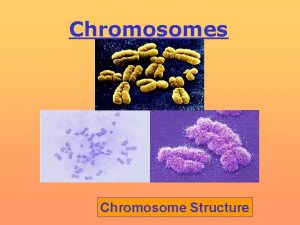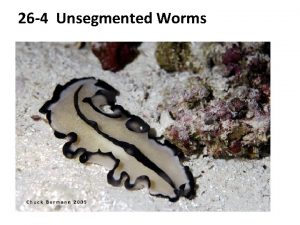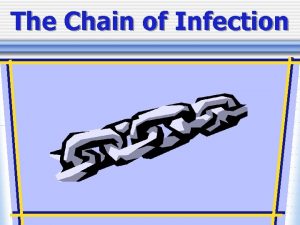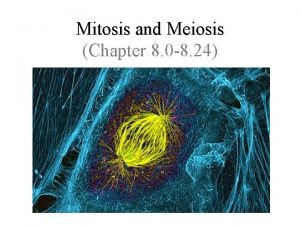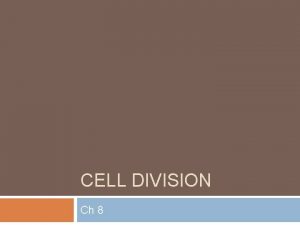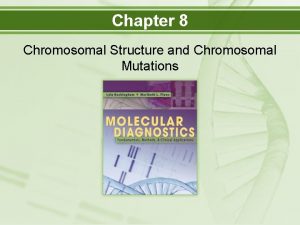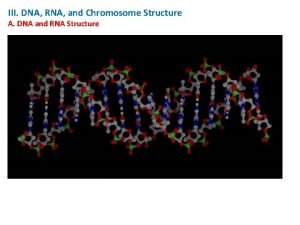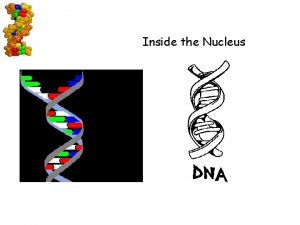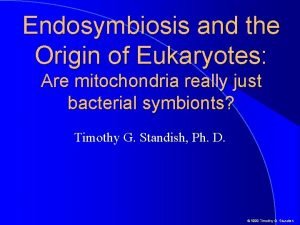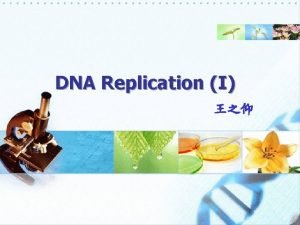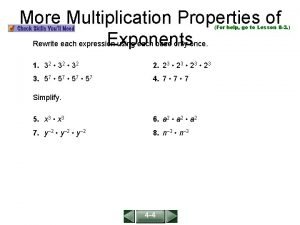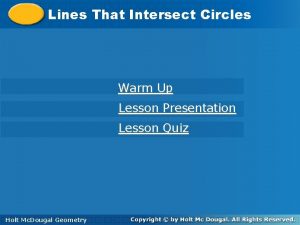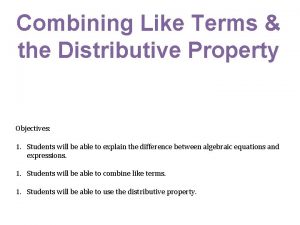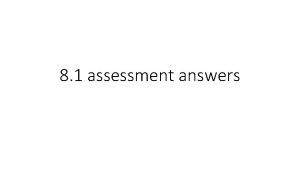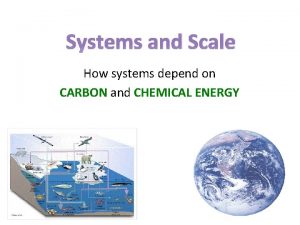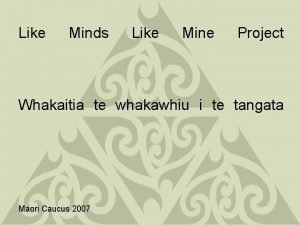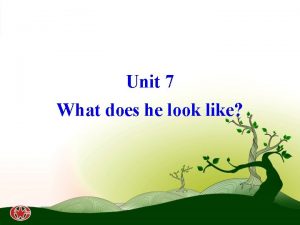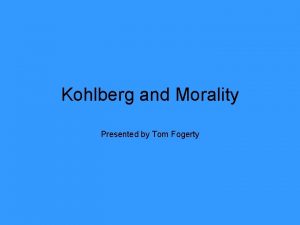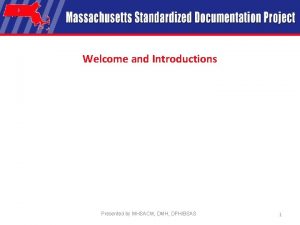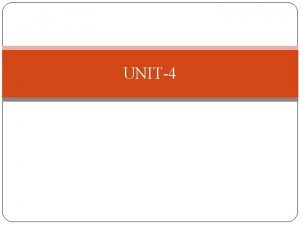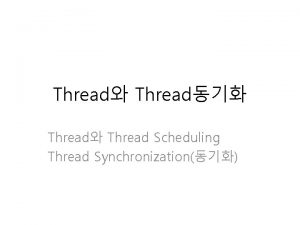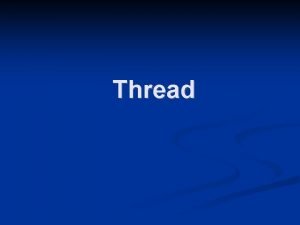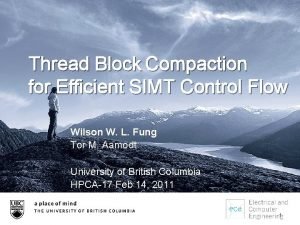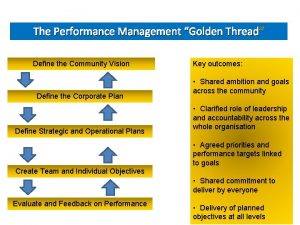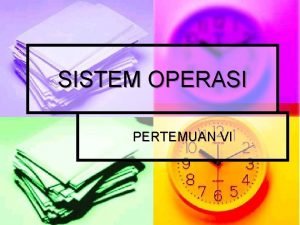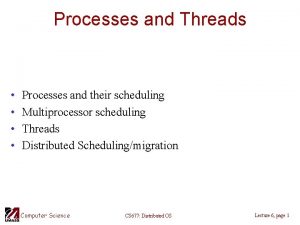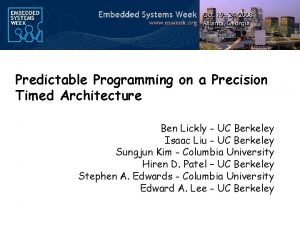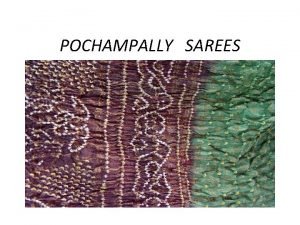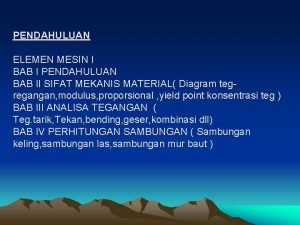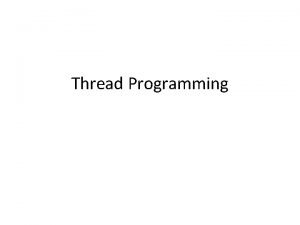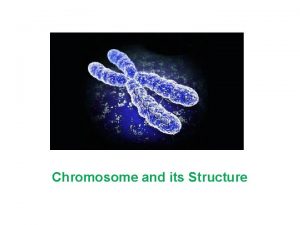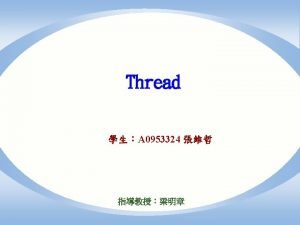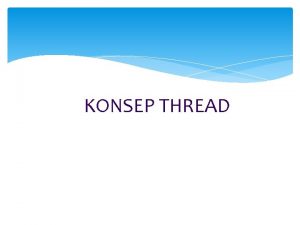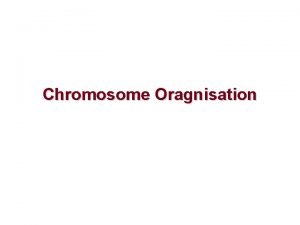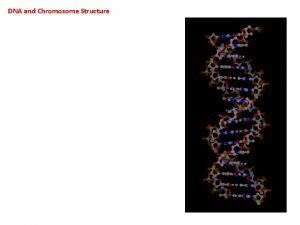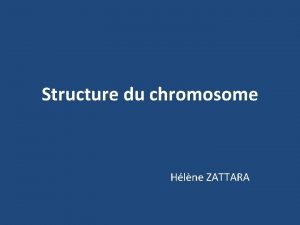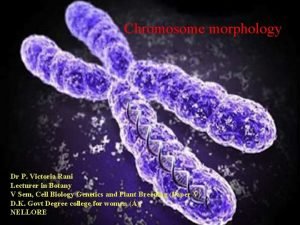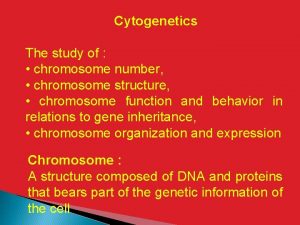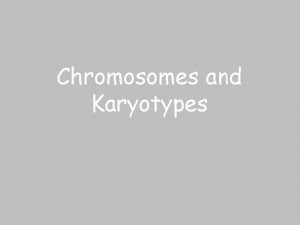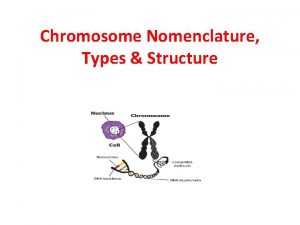Chromosome structure Each chromosome is a thread like








































- Slides: 40

Chromosome structure • Each chromosome is a thread like structure made up of a single long molecule of DNA combined with many molecules of the protein histone

In heterochromatin the DNA molecule is arranged in a compact spiral with the DNA wrapped around histone molecules. The DNA is not being used at this time Complex of histone molecules In euchromatin the DNA molecule is arranged loosely but the DNA is still wrapped around histone molecules. The DNA is being used for protein synthesis at this time DNA molecule nucleosome

• The DNA molecule is made up of many small sections called genes. • Prior to the onset of cell division, each DNA molecule makes a copy of itself (replication) • One thread becomes two identical threads – chromatids • As the two chromatids are identical they will have identical genes and alleles.

centromere One chromatid (one DNA molecule) One chromosome (two DNA molecules) A chromosome at metaphase of mitosis A chromosome at anaphase of mitosis, after the chromatids have separated


A cell goes through 3 stages during its life INTERPHASE NUCLEAR DIVISION CYTOKINESIS


G 1 phase (1 st growth stage) • rapid cell growth when new cell organelles are synthesised S phase (synthesis stage) • DNA is replicated G 2 phase (2 nd growth stage) • centrioles replicate and microtubules start to form the spindle


• Mitosis • Separates the chromatids formed during DNA replication • New nuclei have a full diploid set of chromosomes • New cells are identical to the parent cell

ANIMAL CELLS • A ring of actin and myosin protein filaments forms below the cell membrane around the equator • Filaments contract forming a division furrow which deepens • Cell membrane joins up to form 2 cells



• • PLANT CELLS Golgi body produces vesicles containing carbohydrates which move to the equator Vesicles join to form a cell plate This stretches right across the cell to form the middle lamella Cellulose builds up on either side of the middle lamella to form the cell walls of the 2 new cells




• Chromosomes coil, shorten and thicken • Each chromosome can be seen to be made up of 2 chromatids held together at the centromere • Centrioles move to opposite ends (poles) of the nucleus • Spindle fibres form between centrioles • Nucleolus and nuclear membrane breaks down

• Chromosomes move to the equator (centre) of the cell • Spindle fibres attach to the centromere of each chromosome

• Spindle fibres shorten • Centromere breaks • Chromatids pulled to opposite poles of the cell

• Chromatids form separate groups at the two poles • New nuclear membranes form around each group of chromatids; now the chromosomes • Chromosomes uncoil and nucleoli reform






Mitosis maintains genetic consistency, ensuring that the daughter cells are identical to the parent cell; • each contains a diploid set of chromosomes • each contains the same alleles


• http: //www. cellsalive. com/mitosis. htm

• http: //www. sumanasinc. com/webcontent /animations/content/mitosis. html

• http: //www. johnkyrk. com/mitosis. html • http: //wolverton. owu. edu/lab/intro/mei osis-swf • i. Know Digital Media - Movie Player Window

Video ON MITOSIS PPT

Video ON MITOSIS PPT



AMOUNT OF DNA P R O P H A S E M E T A P H A S E A N A P H A S E STAGE T E L O P H A SE I N T E R P H A S E G 1 I N T E R P H A S E S G 2




 How to read chromosome
How to read chromosome Unsegmented worms examples
Unsegmented worms examples Plantlike organisms that live on dead organic matter
Plantlike organisms that live on dead organic matter Aim of mitosis
Aim of mitosis What does an individual chromosome look like
What does an individual chromosome look like Alterations of chromosome structure
Alterations of chromosome structure Structure of chromosome
Structure of chromosome Structure of chromosome
Structure of chromosome Chromosome diagram
Chromosome diagram Eukaryotic chromosome structure
Eukaryotic chromosome structure Structure of a chromosome
Structure of a chromosome Eukaryotic chromosome structure
Eukaryotic chromosome structure Eukaryotic chromosome structure
Eukaryotic chromosome structure Rewrite each expression using each base only once
Rewrite each expression using each base only once Identify each line or segment that intersects each circle
Identify each line or segment that intersects each circle Combining like terms using distributive property
Combining like terms using distributive property Simplify each expression by combining like terms
Simplify each expression by combining like terms How living things obtain energy worksheet answers
How living things obtain energy worksheet answers Want to would like to would prefer to
Want to would like to would prefer to Remo ualberta
Remo ualberta Which features of the sun look like huge cloudlike arches
Which features of the sun look like huge cloudlike arches Why does ethanol look like water but behave more like wood?
Why does ethanol look like water but behave more like wood? Like minds like mine
Like minds like mine Who does he look like
Who does he look like What he looks like or how he looks like
What he looks like or how he looks like Tekst i like the flowers
Tekst i like the flowers Language
Language Lawrence kohlberg
Lawrence kohlberg Kakov
Kakov Golden thread of documentation
Golden thread of documentation Extends and implements difference
Extends and implements difference Iso metric screw thread
Iso metric screw thread Thread scheduling
Thread scheduling Proses thread
Proses thread Thread block
Thread block Golden thread strategy
Golden thread strategy Task in process
Task in process What is thread in computer
What is thread in computer Thread scheduling
Thread scheduling List out the steps involved in making of pochampalli saree
List out the steps involved in making of pochampalli saree Square thread
Square thread
